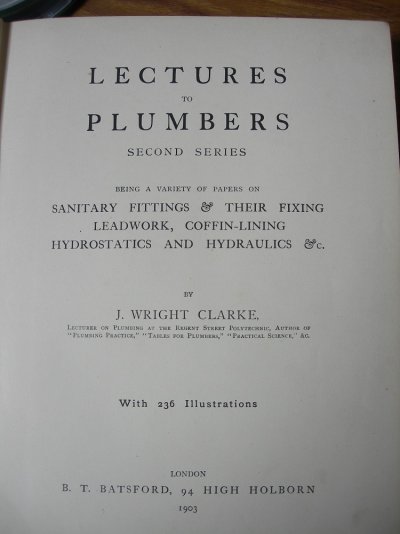DJH
Member
- Messages
- 1,532
- Location
- Co Tipperary Ireland
J Wright Clarke in his Second Series of Lectures to Plumbers Series II 1905 condems the use of 'rimless' type closet pans which when flushed the water swirls around the pan in an effort to cleanse the walls but the vortex formed by the swirling action causes the contents to spin but not discharge completely.
There was also a time when drains were oval shaped rather than round, as Bazalgette's oval shaped sewers in London are. This shape was thought to help propel solids along with a deeper depth of water below it. I was taught when fixing or laying soil pipes that they be laid to a fall to allow a self cleansing velocity discharge. Some of the modern 'pan connectors' available now the outlets of which fit internally into the soil pipe instead of a socket don't help matters. The ? shaped connector comes to mind. When asked where a drain pipe should be fitted in the oversite of a new build house we aske for it to be placed 6" centre from the back wall where the wc was to be fitted.
Whatever happened to syphonic pans?
Doug
There was also a time when drains were oval shaped rather than round, as Bazalgette's oval shaped sewers in London are. This shape was thought to help propel solids along with a deeper depth of water below it. I was taught when fixing or laying soil pipes that they be laid to a fall to allow a self cleansing velocity discharge. Some of the modern 'pan connectors' available now the outlets of which fit internally into the soil pipe instead of a socket don't help matters. The ? shaped connector comes to mind. When asked where a drain pipe should be fitted in the oversite of a new build house we aske for it to be placed 6" centre from the back wall where the wc was to be fitted.
Whatever happened to syphonic pans?
Doug

